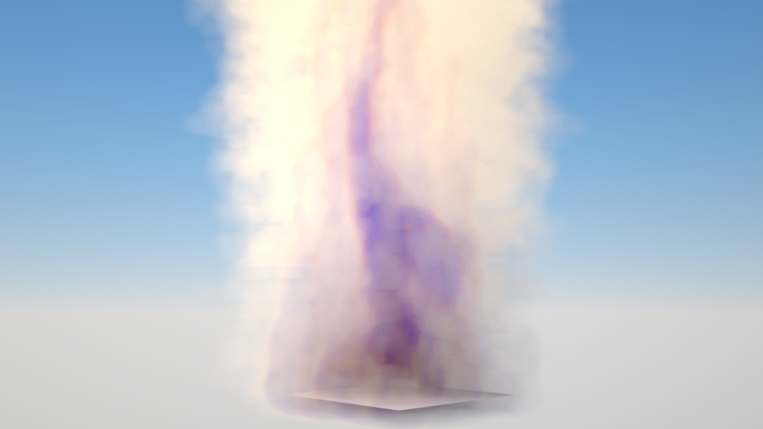
This is a special Gradient node for Volumes like smoke and fire. You can control a Volume geometry's color with more precision. A Volume ramp connects to a Volume Medium, which ports the Blender® OpenVDBDreamworks’ open-source C++ library housing the data structures and tools implementation for storing and manipulating volume data, like smoke and other amorphous materials. The purpose of OpenVDB is mostly to have an efficient way to store volumetric data in memory and on disk. It has evolved into a more general toolkit that also lets you accomplish other things, such as fracturing volumes, converting meshes to volumes and vice versa. However, it does not include a computational fluid dynamics solver, and therefore it cannot procedurally generate smoke or fire. OpenVDB is fully integrated as a library in OctaneRender. For more information about OpenVDB, check at http://www.openvdb.org/. volume as an OctaneRender® Node. Without the Volume medium, the Volume will not show in the render. OctaneRender® then applies the Volume medium to the smoke’s domain geometry.

Figure 1: Volume Ramp Tex connected to a Volume medium

Figure 2: The results of the Volume material
The AbsorptionDefines how fast light is absorbed while passing through a medium. Ramp input on a Volume medium takes the grid value from a Volume Ramp as input. In the color gradient, the colors near 0 on the left map low grid values to a custom color (the lowest values map to white). Higher grid values map to colors on the right of the color gradient. Less-saturated colors cause less-pronounced absorption. Emission Ramps and ScatteringDefines how fast light gets scattered when traveling through the medium. Ramps operate in the same way.
Note: Volume Ramps are restricted to static colors for performance reasons (i.e., it is not possible to attach a series of other texture mappings/generators to colors in the ramps).
There is an important consequence of volume animations specifically related to Volume Ramps: ramps have a Max Value, which you must set to a reasonable value. This value scales grid values between 0 and 1 so the ramp can map these back to colors in the color gradient. This is needed because maximum values in the grids can differ greatly throughout VDBDreamworks’ open-source C++ library housing the data structures and tools implementation for storing and manipulating volume data, like smoke and other amorphous materials. The purpose of OpenVDB is mostly to have an efficient way to store volumetric data in memory and on disk. It has evolved into a more general toolkit that also lets you accomplish other things, such as fracturing volumes, converting meshes to volumes and vice versa. However, it does not include a computational fluid dynamics solver, and therefore it cannot procedurally generate smoke or fire. OpenVDB is fully integrated as a library in OctaneRender. For more information about OpenVDB, please see http://www.openvdb.org/. sequences. Setting the Max Value too high or too low presents just a subset of the colors in the gradient that you specify. The maximum values for grids in the current VDB selected display in the Volume node's Inspector pane. A good rule of thumb is to choose a value near to these, but you are free to customize as you like.